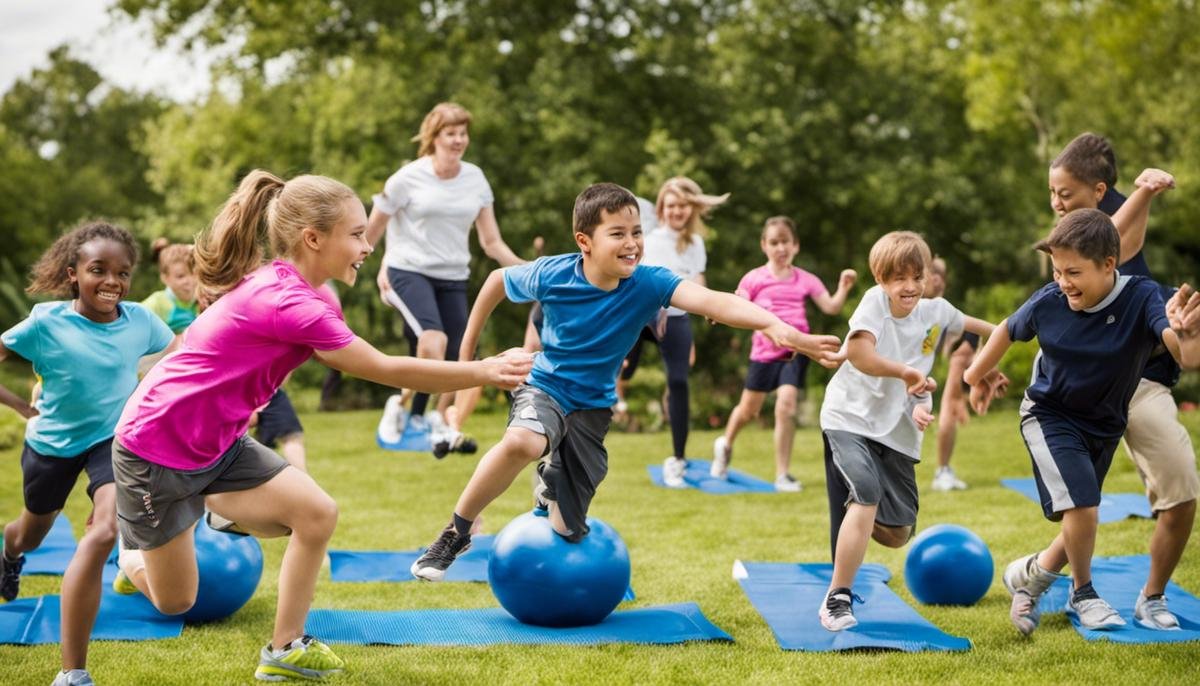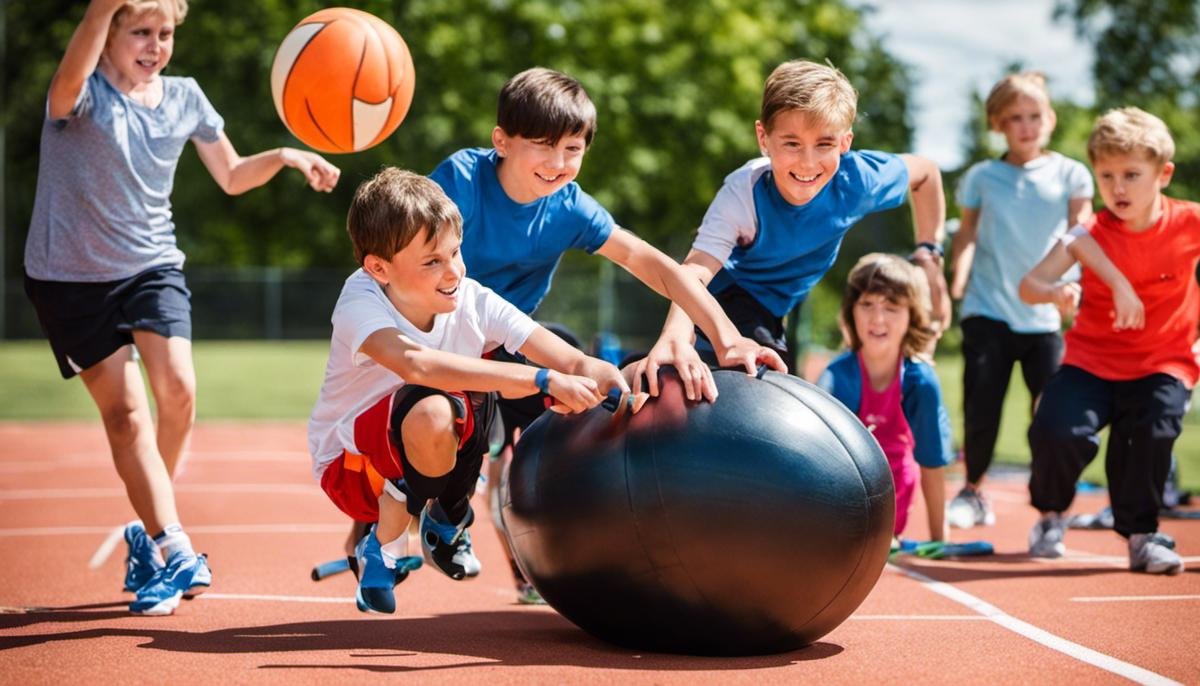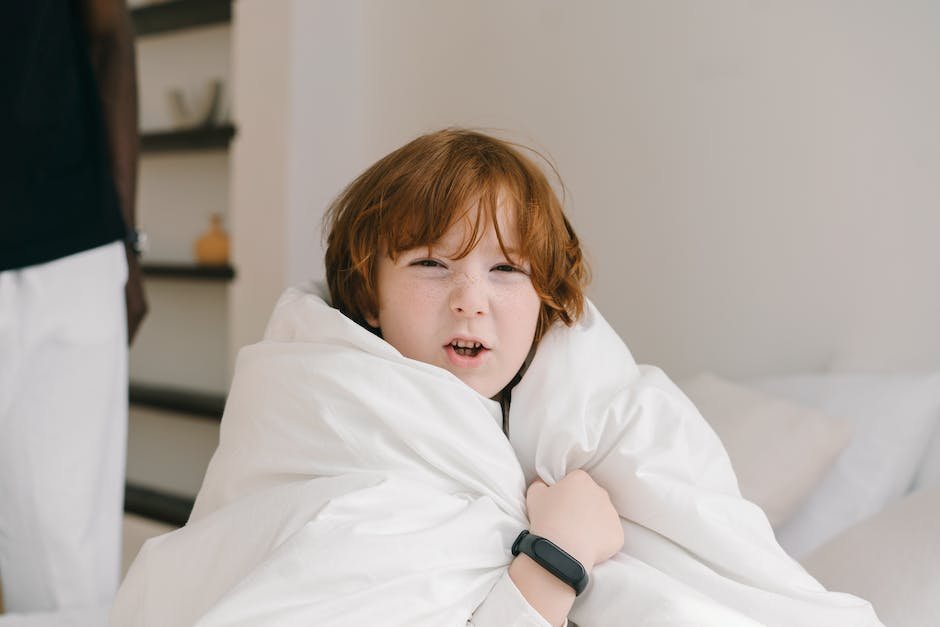
In a bid to create a more inclusive society, it’s essential to understand the unique needs of all its constituents. Among these are children diagnosed with Autism Spectrum Disorder (ASD), facing distinct challenges that often extend into their ability to take part in physical activities. Yet, the importance of physical activity in promoting mental and physical health cannot be understated. This discourse aims to shed light on the understanding of autism and its impact on physical activity, the specific challenges such children faces, adaptive strategies, family involvement, and resources available for support. The exploration of these themes serves as a critical step in fostering an understanding that aids in encouraging increased participation and inclusion of autistic children in physical activities.
Understanding Autism and Physical Activity
Shedding Light on Autism: Understanding Its Effect on a Child’s Physical Activities
Elucidating the realm of Autism Spectrum Disorder (ASD) often comes with a mix of complexities. It’s a multifaceted condition primarily characterized by certain social and behavioral barriers. Yet, not as frequently discussed, are the physical hurdles that kids with autism may face in their daily lives. Addressing this nuanced aspect of autism can ultimately help families cultivate a more supportive, inclusive space for their autistic child to thrive in.
Children with autism have been known to experience physical activity differently than their peers. The reasons vary circumspectly, attributed to the vast spectrum of symptoms as well as individualistic responses to physical stimuli. Understanding these elements can contribute to fostering healthier, more enjoyable experiences in physical activities for children with ASD.
Firstly, let’s consider motor skills. Children with ASD might encounter difficulties with overall motor coordination. This can be seen through the endeavor of simple tasks requiring either fine (like drawing or performing zippers) or gross motor skills (jumping, running). Such hurdles might occasionally result in an autistic child being reluctant to participate in physical play or sports activities.
Sensory processing is another crucial component. Kids with autism often have a heightened or reduced sensitivity to sensory inputs, which can affect their physical activity. For instance, they may find the texture of grass uncomfortable or the noise of a playground overwhelming. Thus, seemingly ordinary environments can become discomfortingly challenging.
Furthermore, children with autism typically thrive on routines. Shaking up these routines for a spontaneous game of catch or an impromptu visit to a trampoline park might be intimidating. This love for routines can result in limited exposure to varied physical activities, thus affecting their level of physical fitness.
However, children with autism can also experience many benefits from physical activity. Structured exercise regimes can improve their physical health, cognitive abilities, and emotional well-being. Activities that engage both sides of the body can foster gross motor skills, while crafts and puzzles can enhance fine motor skills and hand-eye coordination.
Contrary to common misconception, many children with autism can enjoy and excel in sports and physical activities. With modifications to accommodate their unique sensory needs, you can make physical exercise a fun part of your child’s routine. Use of visual schedules or social stories can also help to effectively prepare your child for changes in their day-to-day activities, eventually fostering a comfortability with variation.
Remember, every child with autism is unique and will have different responses to different activities. The key is patience, creativity, and valuable early intervention strategies to mold an encouraging, positive physical environment for your child.
In the vast world of autism, having a deep understanding and adjusting accordingly to every child’s individual needs can encourage them to break the barriers and excel in their physical potential. The proverbial rule that “slow and steady wins the race” stands true for children with autism too. Let’s keep encouraging them in their unique race through life by nurturing their physical development.

Identifying Specific Physical Activity Challenges
Addressing Physical Activity Challenges in Autistic Children
Children on the autism spectrum can sometimes experience various obstacles when it comes to physical activities, due to unique characteristics associated with this condition. Yet, engaging physical activities are essential for every child’s overall health and development. For children with autism, this is especially important as it aids in their social, cognitive, and motor skills development.
One challenge that an autistic child might encounter is the difficulty with imitating movements. Motor imitation is a fundamental part of learning new activities, particularly group physical activities. In this scenario, visual supports such as step-by-step instructions, video modeling, or demonstrations by an instructor can go a long way. These aids provide a visual guide to the children, making it easier for them to understand and imitate the movements.
Children with autism might also face difficulties in reading nonverbal cues and social interactions, which makes team sports or group-based physical activities challenging. Altering these activities to minimize the social complexity can be a helpful solution. For instance, consider one on one sports, or exercises where the performance of the individual is the focus.
Additionally, these children might also experience anxiety and stress related to changes in their environment or routine, which might dissuade them from participating in physical activities. It’s crucial to maintain consistency and slowly introduce new physical activities. A gradual transition might take more time, but it can be more effective in the long run, fostering a more positive association with physical activity.
To help children with autism engage in physical activities, one key approach is to incorporate their interests into the activities. For instance, if a child enjoys playing with balloons, consider activities like balloon volleyball or balloon races. This method not only makes physical activity more enjoyable but also more engaging for them.
Another essential consideration is the need for comfort and adaptability in the physical environment. Ensuring the activity space is stark of sensory triggers and overstimulation can make children with autism more comfortable and willing to participate. This could involve reducing loud noises, maintaining a calm ambience, or even considering the feel of the equipment and the clothing worn during the activity.
In conclusion, yes, there are specific challenges in encouraging physical activities among children with autism. Nonetheless, it is essential to remember that with patience, adaptation, and a keen understanding of the child’s unique needs, these challenges can be effectively managed. Promoting a healthy and active lifestyle for children with autism ultimately requires an environment that is safe, engaging, and inclusive.

Adapted Physical Activities for Autistic Children
Adaptive physical activities can make a world of difference in the life a child with autism. After all, every child deserves the opportunity to play, explore, develop their skills, and have fun. Here are some types of adaptive physical activities that are especially beneficial to kids on the autism spectrum.
-
Water Activities: Water activities can be very comforting for children with autism, since the water provides an all-over pressure that can be calming and soothing. Swimming can help improve coordination, balance and strength. Alternatively, simple water play in a shallow kiddie pool can be just as beneficial.
-
Horseback Riding: Therapeutic horseback riding, also known as equine therapy, can be a fantastic option for kids with autism. The rhythm and movement patterns of horses can help develop muscle strength, balance, coordination and confidence. Equine therapy also promotes empathy and emotional bond which, can play a pivotal role in the child’s social and emotional development.
-
Yoga: Yoga may seem a bit tricky at first, but once the child learns the routines and poses, it becomes a beautiful blend of physical activity and mindfulness. Yoga benefits include increased body awareness, improved balance and coordination, enhanced flexibility and reduced stress.
-
Martial Arts: Martial arts such as Karate and Taekwondo provide a structured environment that children with autism often respond well to. Plus, these activities can help them develop discipline, respect, self-control and self-esteem.
-
Dance Therapy: Dance can be a wonderful way for a child with autism to interact with music and rhythms. Dance therapy encourages self-expression and can improve motor skills. Also, by executing choreographed movements, they can better develop their imitation abilities.
Remember, physical activities should always be adapted to meet each child’s unique needs and abilities. Involving the child in the decision process, by asking them what activities they would like to try, can make them feel valued and encourage participation. Patience and flexibility, too, play a big part in the success of introducing new physical activities.
Adaptive physical activities for children with autism are certainly not limited to these five suggestions. As long as it promotes fun and fitness, and fits the child’s interests, abilities, and sensory preferences, be encouraged to explore an array of activities.

Involving Autistic Children in Family Physical Activities
Championing Inclusive Family Physical Activities for Autistic Children
Sailing into uncharted waters: Water activities
Water offers a soothing, rhythmic wave of sensory input that autistic children often find calming. Whether it’s taking a trip to the beach, investing in a backyard pool, or even joining a local aqua therapy class, water-based activities can be an inclusive way to encourage family physical activity. They can effectively help autistic children boost their motor skills while enjoying the reduced impact of moving through water.
Saddle up for Adventure: Horseback Riding
Horseback riding can be a wonderful therapy and recreational activity for children with autism. The movement of the horse provides sensory stimulation and can help strengthen rider’s balance control, motor coordination, and tactile sensation. Additionally, it can also promote emotional bonding and socialization skills. Programs such as the Professional Association of Therapeutic Horsemanship (PATH) can offer guided, therapeutic riding sessions suitable for children with diverse needs.
Strengthen and Stabilize: Yoga
Yoga is a fantastic way to involve autistic children in family physical activities. Not only does it promote flexibility and muscle strength, but it also boosts self-regulation skills, which are critical for managing the sometimes-overwhelming sensory experiences common among autistic children. Visual cards or yoga apps can be helpful to guide children in learning poses, turning the sessions into a fun, inclusive activity.
Control and Coordination: Martial Arts
Translating into an art of regulation and discipline, martial arts can be a therapeutic and empowering exercise for children on the autism spectrum. In martial arts, the focus is often on self-improvement, individual growth, and routine—all aspects that can resonate with an autistic child. From Tai Chi to Karate, the martial arts realm offers various styles to suit different interests and comfort levels.
Expressing Emotion: Dance Therapy
Dance therapy provides an outlet for physical energy, emotional expression, and sensorimotor function. A study from the American Dance Therapy Association reported significant improvements in social skills, attention span, sensory integration, and self-esteem in children with autism who took part in dance therapy.
Let’s remember to encourage and celebrate every effort, every step, every twirl—however small they may be. Adjustments will be needed, of course. But remember, at the end of the day, it’s about having fun together as a family. A child’s smile, seeing them engaged and active, that’s our real reward. Let’s ensure our family activities are a haven where every child, including those with autism, feels included and loved. Because every child deserves to shine, and together, we can provide the platform for them to do so.

Resources and Support for Physical Activity in Autism
The Power of Support and Resources in Fostering Physical Activity for Autistic Children
Autistic children often need thoughtful and specialized support systems to encourage their physical activity. Luckily, countless resources are readily available for parents, educators, and caregivers to tap into.
One such support system is the provision of adaptive sports and recreation programs. These programs offer a tailor-fit experience based on the child’s unique abilities, giving them the chance to fully engage in physical activities despite any physical or cognitive limitations. Trained coaches and therapists incorporate play-based learning techniques to make these sessions even more interesting.
Another invaluable resource is Occupational Therapy (OT). Trained therapists can provide customized exercises to enhance motor coordination and sensory-motor skills. By integrating these exercises into a child’s regular routine, they can help ease physical activity challenges in a safe environment.
In recent years, technology has emerged as a useful tool in expediting processes. There are several mobile apps available that provide a plethora of games and interactive activities designed to improve motor skills and physical activity engagement among autistic children.
In addition to this, there are various sensory-friendly sports equipment available in the market, specifically designed for autistic children’s needs. These include weighted vests, tactile balls, and trampolines with safety nets, all of which can both stimulate and soothe sensory issues.
Support groups are another resource parents should tap into. By connecting with other parents and sharing experiences, parents can gain new insights, tips, and tricks to encourage their child’s physical development. Support groups also provide peer interaction opportunities for autistic children, a vital aspect of their social growth.
Furthermore, enrolling children in organized physical activities such as special-needs gymnastics, adaptive swimming, or therapeutic horseback riding can also have a profound impact on boosting their physical abilities and confidence. These programs usually have trained professionals on hand to provide a safe, supportive, and inclusive environment.
Last, but certainly not least, remember that schools play a crucial role in promoting physical activity in children. Collaborate with your child’s school teachers and special education professionals to incorporate appropriate physical activities into the child’s school day.
It’s essential to remember that fostering physical activity in children with autism is not a one-size-fits-all endeavor. Each child’s interests, abilities, and comfort levels are as unique as they are. Therefore, the journey to promoting physical activity will look different for everyone. But with patience, love, understanding, and the wealth of supports and resources available, we can empower our children to lead active, happy lives.

This narrative dives into the world of autism, seeking to elucidate the complex relationship with physical activity. The challenges posed by autistic characteristics, such as sensory sensitivities and social interaction difficulties, prevent many autistic children from effectively engaging in conventional physical activities. However, with adaptive physical activities and thoughtful inclusion strategies, engaging these children becomes possible, promoting their physical and mental well-being enormously. From family walks to specialized equipment, families and communities can work together to inspire participation and enhance the quality of life of autistic children. Lastly, numerous resources and supports are revealed, showcasing a rising tide of recognition and aid, fortifying the crusade for inclusion and understanding of autism in the realm of physical activity.




